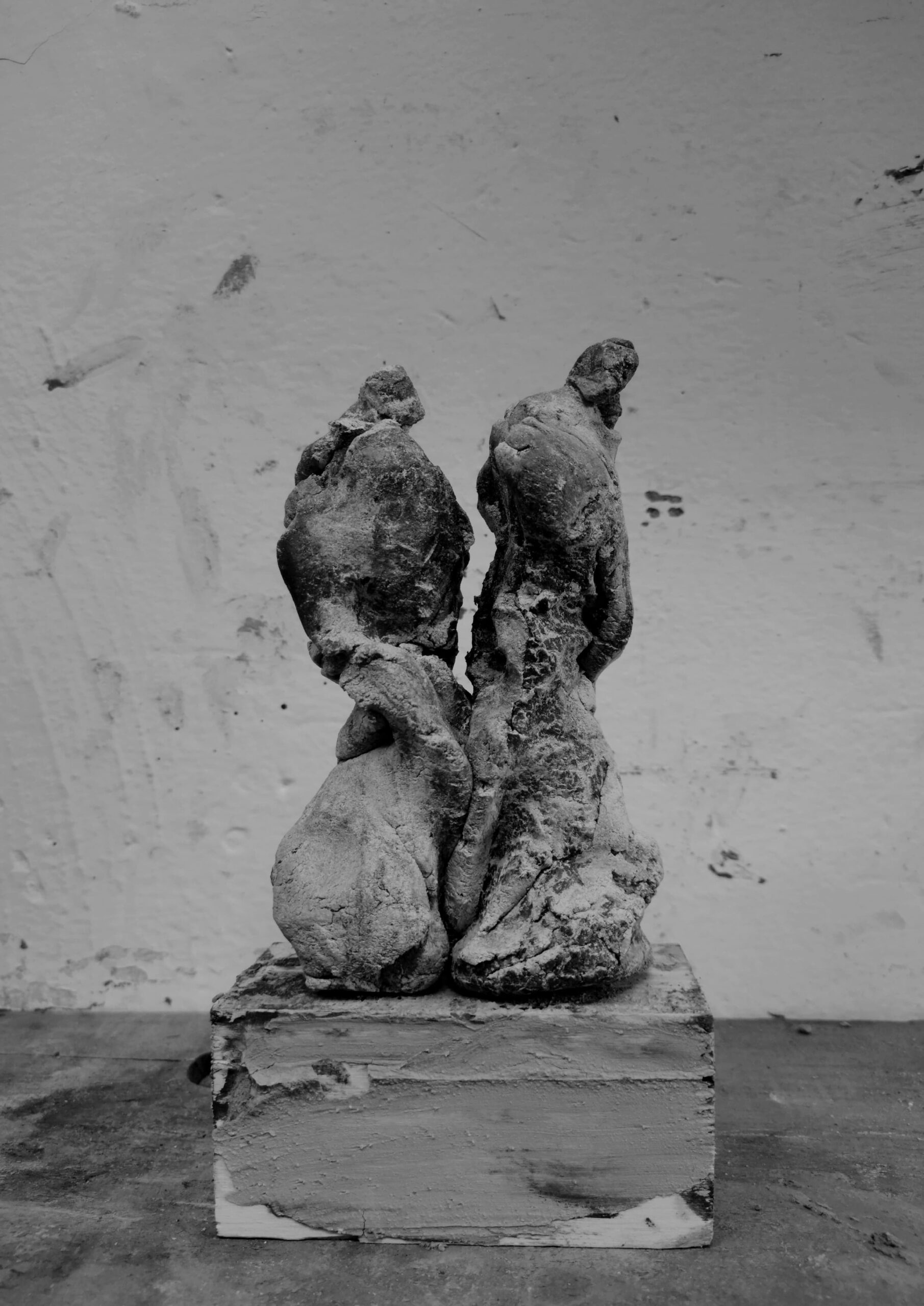Coppia
Davide Rivalta e Emanuele Becheri

20/05/2022
The discovery of some works by Davide Rivalta occurred in 2004: during the *Donner à voir* exhibition curated by Saretto Cincinelli. On that occasion, I displayed drawings created from carbon paper etchings. A few days before the opening, Davide drew a graphite turkey at the base of a wall inside the gallery. He didn’t draw the turkey’s plumage but conveyed its dense movement on the ground—marks that, from a certain distance, reassembled to reveal the masses in motion. At the entrance to the internal garden of that private residence, which served as the gallery, a white resin dromedary confronted visitors, almost blocking access.
The frightened head of the animal made itself felt even through the plastic material that constrained its internal movement.
An initial impression.
At that time, more than an affinity with that sculpture, there was something about the movement of the lines, the nature of the trace, and finally the drawing that connected us… the projection of the gesture, the co-incision, its inevitable determination, and the perceived velocity—something that reeked of burning, friction, incision. It was the weighty drawing of a sculptor.
Two years later, at the Künstlerhaus Palais Thurn und Taxis in Bregenz, Davide placed a bronze eagle on the garden grass with an uncommon sense of gravity. The eagle’s gaze pointed directly at the exhibition’s windows. The morning after the opening, I instinctively wanted to confirm the bird’s presence, once again casting my gaze through the museum windows. It was there, battling the light without losing, even at that distance, the essential vibrations of the touch. It was not an installed object; it was the assured perception of a presence.
Only ten years later, when I began to take a direct interest in sculpture, did my relationship with Davide become more defined, even in its divergences.
Davide usually creates a plaster model, constructs an iron framework, and a corresponding cage to support the clay, shaping the enlarged forms. He continues to study it as he adds masses. Only at the end does his touch emerge in the decisiveness of the gesture, and the model is transfigured.
By contrast, I approach a block of clay without an internal framework; my figures have the same specific weight as the original block.
Based on this differing premise for conceiving the emergence of the figure, I began presenting Davide with small sculptures to serve as models for development on a larger scale, both of us aware that the gesture made on a small scale would struggle to emerge when magnified. This was the challenge, beyond the circumstances: to convey in bronze the driving forces that animated the small model.
Two works were inevitably positioned—one outside in the Cour du Cloître and the other inside the gallery: the result of a relationship built over time, a dual perspective on sculpture, offspring of the small initial *Coppia* in terracotta, reinterpreted by Davide in the definitive bronze.
It was a journey of inevitable betrayals, dissonances, losses, and gains.





